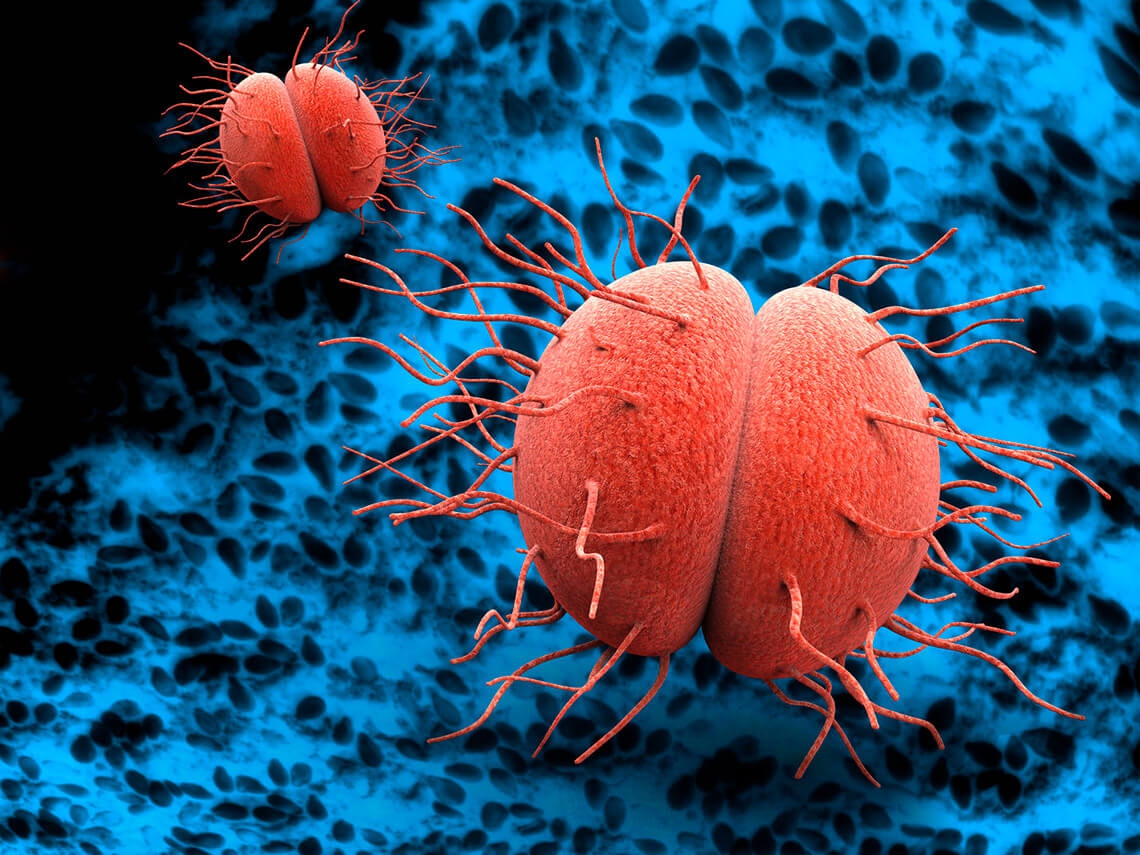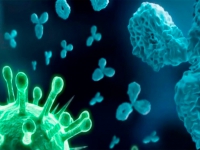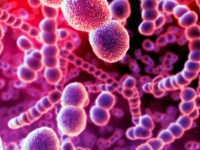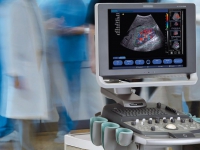Gonorrhea (tripper) - is a frequent and difficultly controlled, socially significant sexually transmitted disease that is transmitted almost exclusively sexually from person to person. It causes acute inflammation of the genitals, which leads to serious complications. The cause of gonorrhea is the gram-negative diplococcus Neisseria gonorrhea, referred to as gonococcal. He has been known in medicine since 1879. Most often gonorrhea hurts people who have casual or non-permanent sexual relations without a condom. The social significance of gonococcal infection is due to the adverse effect it has on demographic indicators, as it significantly increases the incidence of male and female infertility. The mechanism of transmission of gonorrhea - contact, the way - sexual, extremely rarely - domestic. The source of infection is most often a sick person suffering from a chronic torpid or asymptomatic form of gonorrhea, unaware of the presence of infection, practicing frequent sexual relations with a constant change of sexual partners and not using condoms.
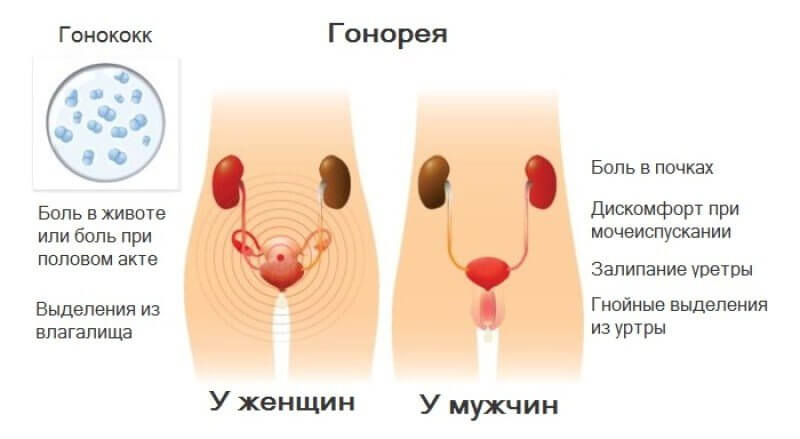
In men, acute urethritis is most common, while in women gonococcal infection in most cases causes endocervicitis. Asymptomatic and torpidly gonorrhea occurs in men up to 30-48%, in women up to 50-94%, especially when localized in the throat and rectum.
The susceptibility to gonorrhea is very high. In one-time sexual contact with female sick with gonorrhea, a man is infected in 20-25% of cases, while a woman after a single sexual contact with a sick man - in 50-90% of cases. Because of the commonality of epidemiological characteristics with other STIs, gonorrhea, as mono-infection, is rarely reported. From 40% to 62% of patients with gonorrhea are infected with two or more STIs: Ch. trachomatis and Tr.vaginalis - up to 60%-80%, with C. Albicans in women - 50% (this explains frequent chronic thrush in women with N.G./, with G. vaginalis - 17%).
With the simultaneous infection of gonorrhea and other STIs, the incubation period is extended, the clinical course of the disease changes, immunological reactivity is disrupted, clinical and laboratory diagnostics are difficult, so patients remain without appropriate treatment for a long time. This contributes to more severe complications and increased relapses. With the association of gonococcal with Trichomoniasis, Chlamydia, and other STIs, the pathogenicity of each microbe increases, and one of the pathogens can persistence not only in the cells of phagocytes but also in other microorganisms and protozoa (reservation of gonococcal vaginal trichomonads with the preservation of viability). The reasons for the failure of the treatment of gonorrhea may be the variability of gonococcal, the appearance of microorganisms with certain defects of the cell wall, up to the formation of L forms, the ability of gonococcal to form a microcapsule, complicating phagocytosis and often a factor of virulence. Therefore, the frequency of recurrence of gonorrhea in the presence of mixed infection with Chlamydia, Trichomonades, and Ureaplasmas reaches 40%.
The activation of STIs, including reverse reversal from L forms into the original types of bacteria, which is associated with clinical exacerbation and recurrence of the disease, is due to:
- a state of immunosuppression, which can be pathological (hypothermia, overheating, insolation, flu-like condition, intake of alcohol and non-alcoholic carbonated beverages, spicy, salty, marinated food, stress)
- physiological (often associated with changes in hormonal balance in the body - the moment of ovulation and amplification of estrogen activity, after menstruation)
- the state of the body after sexual intercourse
- presence of polyendocrinopathology
- superinfection conventionally pathogenic flora of the new sexual partner
- invasive urological and gynecological procedures.
A particular epidemiological threat is posed by patients with gonorrhea infected with HIV, due to an increase in the concentration of HIV in the ejaculate and the secret vagina by 8 times, compared to only HIV-infected. The entrance gate of infection is the cylindrical epithelium of the urethra, cervix, rectum, and conjunctiva of the eye. The same defeat of organs covered with flat epithelium, possibly if its integrity is impaired by mechanical or chemical
injuries, macerations by pus, and some other factors.
The mucosa infection includes adhesion, invasion, reproduction, and transfer of the pathogen to subepithelial tissues.
They are distinguished by fresh gonorrhea (with the age of the disease up to 2 months), which is divided into stages: acute, preacute and torpidly flowing (low-symptomatic), chronic (with a statute of the age of more than 2 months ), usually leaking torpid, exacerbating under the influence of provoking factors, as well as asymptomatic gonorrhea, in which the carriage of gonococci on the surface of the mucous membrane does not cause an inflammatory reaction.
The main complaints of women:
- Vaginal and/or cervical mucosa - vaginal secretions
- Dysuria
- Pain at the bottom of the abdomen
- Dyspareunia
- Pain and discharge from the rectum.
The main complaints in men:
- Purulent discharge from the urethra
- Dysuria
- Pain in the urethra
- Pain in the crotch with irradiation in the rectum
- Pain and discharge from the rectum.
The main manifestations of gonorrhea in newborns:
- eye damage, rhinitis, vulvovaginitis.
The main manifestations of acute gonorrhea infection in women:
- urethritis
- cervicitis
- vulvovaginitis, vestibulitis, bartoliniitis.
The main manifestations of acute gonorrhea in men:
- urethritis
- balanoposthitis.
In men and women: conjunctivitis, iridocyclitis, proctitis, pharyngitis with throat, tonsils, tongue, gums.
The main manifestations of acute gonorrhea in children:
- urethritis, vulvovaginitis, conjunctivitis, proctitis, pharyngitis, arthritis.
The main manifestations of gonorrhea in newborns:
- ophthalmia
- vulvovaginitis.
Highly rare is a dissected gonococcal infection in the form of sepsis, myocarditis, meningitis, arthritis, bursitis, synovitis, tenosynovitis, osteomyelitis.
Complications of gonorrhea infection in women (lower genitourinary system):
- chronic urethritis
- chronic cervicitis is the most common manifestation of gonococcal infection. In the chronic course, there are cervical erosions, cervical retentive cysts (Ovuli Nabotti, O.N.).
- bartolinium abscess.
Upper genitourinary system(PID):
- endometritis
- salpingitis with frequent obliteration of pipes
- techovarial abscess
- pelvioperitonitis with the development of the adhesive process in the small pelvis and possibly ectopic pregnancy
- perihepatitis(Fitz syndrome - Hugh – Curtis)
- infertility.
Complications of gonorrhea in men:
- urethritis (paraurethritis, tizonitis, littreitis, morganite, paraurethral abscess), colliculitis (kataral, interstitial, cystic, atrophic).
- balanitis, balanoposthitis
- phimosis, paraphimosis
- urethra (single or multiple, ring-shaped, sickle-shaped, looped, knotty of varying lengths, and diameters).
- lymphangitis, lymphadenitis
- epididymite, orhoepididimitis (acute, subacute, chronic). Sometimes combined with differentitis and funiculitis. Often can be complicated by the violation of the passage of the appendage and the development of obturating infertility and (less ) autoimmune infertility.
- prostatitis (acute, subacute (chronic prostatitis) catarrhal, follicular, parenchymatous) is leaking without treatment indefinitely and its course is accompanied by exacerbations. Recurrences of prostatitis can be caused by alcohol intake, spicy, salty, canned food, hypothermia and/or overheating, dysrhythmia of sexual life, unprotected sexual contact.
- vesiculitis is often combined with prostatitis and epididymitis. Subdivide to catarrhal, deep, empyema seminal bubbles, perivisiculitis.
- infertility.
Dissected gonococcal infection (systemic complications in men and women):
- arthritis, tenosynovitis
- skin lesion
- endocarditis, myocarditis, pericarditis
- meningitis, sepsis
- anorectal gonorrhea, bladder, ureters, kidneys, mouth (60-80%), nose, ear, eyes, larynx are asymptomatic.
Clinical manifestations of gonorrhea have undergone some significant changes in recent decades. In particular, irrational therapy with antibacterial drugs (including self-medication) and, as a result, the increase in resistance of gonococcal to them, through an increase in the number of plasmids - a conditional product In betta lactamase.
Indications for an examination of gonorrhea infection
In men:
- presence of complaints of porous and/or mucous-purity discharge from the urethra, itching in the urethra
- symptoms of dysuria
- the presence of inflammatory changes in the outer opening of the urethra, paraurethral passages
- the presence of pain in the appendage area of the testicle and/or testicle
- the presence of pain and/ or discharge from the rectum, signs of proctitis
- signs of prostate inflammation
- signs of conjunctivitis
- the presence of a history of unprotected sexual acts
- presence in tests of trichomoniasis (after its treatment / or other STIs )
- infertility.
In women:
- the presence of inflammatory diseases of the genitourinary sphere, moaning or purulent discharge from the vagina, manifestations of proctitis, vulvovaginitis, cervicitis.
- pelvic inflammatory diseases (PID) hydro or piosalpings, endometritis, adnexitis (pelvic adhesion process).
- presence of complaints of emerging subjective disorders in the genital area (itching, burning when urinating, pain at the bottom of the abdomen, amplification of whites, spotting)
- the presence of erosion and/or cervical dysplasia
- presence of cervical cysts (Ovula Nabotti, O.N)
- presence in tests of trichomoniasis (especially after its treatment / or other STIs)
- presence of T2, T3 cytological types of smears
- presence of signs of conjunctivitis
- unprotected sexual acts
- infertility, habitual miscarriages in up to 12 weeks (frozen, undeveloped pregnancy), premature birth in history.
- pregnant women are examined three times:
- survey should be carried out when you are registered
- examination - at 27-30 weeks
- examination - at 34-40 weeks
Outside of the specified time frame, the examination of pregnant women is carried out based on indications (the appearance of sexual discharges, subjective complaints, etc.).
- all women who have not been examined before hospitalization before the appointment of antibacterial treatment are examined in gynecological hospitals
- all maternity women without exchange cards are examined in maternity hospitals
- maternity parents with a complicated period of the postpartum period (better on 5-6 days after childbirth).
Newborns with conjunctivitis and/or vulvovaginitis. When the gonococcal etiology of conjunctivitis and/or vulvovaginitis is confirmed, the parents are examined.
Children/girls with symptoms of vulvovaginitis.
Persons:
- having sexual contact with a patient with gonorrhea
- undergoing STI screening
- those diagnosed with trichomoniasis (before and especially after-treatment of the latter).
- sexually abused.
If an unknown source of infection is recommended, a second serological examination on Lues is recommended after 3 months, HIV, Hep B, and C in 3-6-9 months.
Methods of diagnosing trichomoniasis:
- microscopy of stained smears
- cultural (sowing at In Tray GC, BioMed Diagnostics, Inc., USA).
- determining the sensitivity of gonococcal to antibiotics
- PCR, -NASBA (molecular-biological / transcription amplification).
- direct immunofluorescence.
In a laboratory diagnosis of gonorrhea, there are often situations when, in an apparent clinic of the disease or persons listed as the source of infection, it is not possible to identify gonococcal. Such situations can be caused by the fact that after getting on the epithelium gonococcal quickly penetrate the subepithelial tissue, numerous glands and crypts, where they find favorable conditions for existence. Over time, they may disappear from the surface of the epithelium of the genitourinary tracts and be located in the urethral glands and crypts, the mouths of which are often clogged with moaning plugs or squeezed by the growing connective tissue. The resulting small pseudo abscesses are a reservoir of gonococcal, which under certain "provocative" conditions (sexual intercourse, menstruation, alcohol intake) open in the urethra and lead to infection of the partner. After a few days or even hours, the gonococcal swells disappear again from the surface of the mucous membrane or cervical canal and may not be detected during the examination.
Improving the quality of laboratory identification methods for STIs contributes to:
- careful choice of localization and material for research for pathogens (freshly released urine, free separated and/or scraping epithelium from the urethra, vagina, cervical canal, rectum, conjunctiva, nasopharynx)
- use of urological and gynecological manipulations to investigate the material of the prostate gland, seminal bubbles, tubules of the appendage of the testicle, ejaculate, endometrium, contents of cervical cysts (Ovula Nabotti), uterus, fallopian tubes, sactosalpings, ovarian cysts
- correct determination by clinicians of the moment of STI examination taking into account the hormonal background (phase of the menstrual cycle), the time of the conduct, the nature of the clinical course of the infectious process, "provoking" factors
- conducting a parallel study of clinical material from two or more hotbeds at the same time
- re-examination for STIs with a negative primary result after a certain period and different methods
- the possibility of re-examination of the patient in the event of one infection in the parallel presence of clinical symptoms corresponding to another STI.
At the present stage, patients are dominated by chronic, small- and asymptomatic forms, as a result of which patients do not see a doctor on time, and internal genitals are inevitably involved in the infectious process. At the same time, the gonococcal "goes" into the membrane-limited zones (littreit, morganite, etc.) and the overlying organs of the genitourinary system (an appendage of the testicle, fallopian tubes, etc.), unavailable for the taking of the material by public methods. Also, the detection of low-symptomatic chronic forms of urethrogenic STIs is hampered by the absence of an intensive deposition, insufficient for microscopic and microbiological methods of identifying the number of pathogens.
Frequent detection of saprophytic aerobic bacteria and apathogenic anaerobic in crops is generally not a testament to their etiological role and the basis for the diagnosis of "bacterial urethritis".
The presence in swabs and/or secret prostate or seminal bubbles of more than 10-15 white blood cells, in-( in acute gonorrhea ), or extracellular (in the chronic form ) gram-negative (gr-) diplococci indicates the presence of gonorrhea their lesions. Under the influence of antibiotics, gonococcal can quickly change its properties and become gram-positive(gr+). It should be taken into account that the negative results of a single study of the secret of the prostate do not mean that there are no pathological changes in the prostate gland. Due to the occlusion of the ducts of the prostate lobes by an inflammatory mucosa thick secret containing bacteria, white blood cells, the restored outflow from infected prostate ducts on 4 prostate massages is a more objective criterion of inflammation (increasing the number of white blood cells in the secret of the prostate).
The principles of treatment of gonorrhea should be based on the fact that gonorrhea is usually found in association with trichomoniasis and other STIs.
Therefore, the order of treatment of such an association will be the following:
- maximum sanitization from trichomonal infection followed by strict control by all available methods
- in the presence of a gonorrhea infection, its treatment begins after convincing negative control on trichomoniasis
- chlamydia and conventionally pathogenic myco-ureaplasma infection is subsequently treated
- completes the sanitization of antiviral therapy.
Prevention of gonorrhea:
- sex in a condom (does not give 100% guarantee of protection).
- individual prevention in men, no later than 2 hours after sexual contact.



